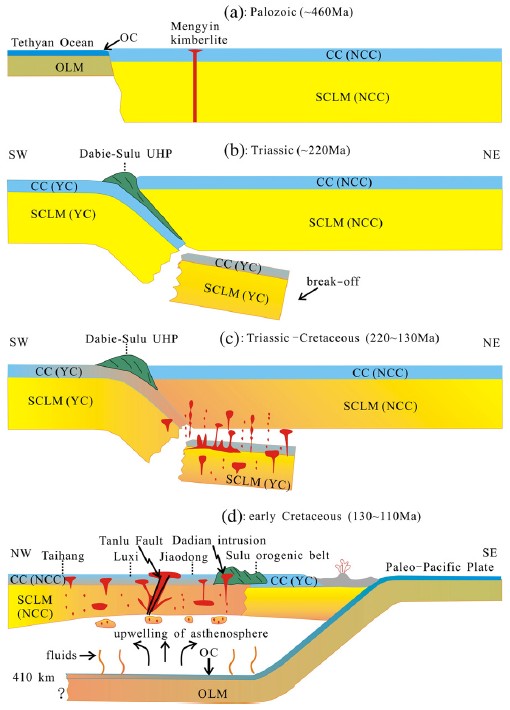Geochemistry and Sr–Nd–Pb–Hf isotopes of the Mesozoic Dadian alkaline intrusive complex in the Sulu orogenic beltUpdate time:08 12, 2011
Ph.D. student LAN Tingguang and his teacher FAN Hongrui report the geochronological, petrological and geochemical data on the Dadian complex, with an aim to constrain its petrogenesis and tectonic setting within the Sulu orogenic belt. The Dadian complex is the largest alkaline intrusive complex in the Sulu orogenic belt. They make the following conclusions. The Dadian alkaline complex crystallized at high temperature and intruded at shallow crustal level during early Cretaceous (122–125 Ma). The alkaline complex was mainly derived from an enriched lithospheric mantle source and contaminated by crustal material during magma ascend. The enriched lithospheric mantle originated from the ancient lithospheric mantle beneath NCC which was modified by the melts/fluids derived from the subducted Yangtze slab. The crustal material was derived from partial melting of Precambrian basement rocks at shallow crustal level. The Dadian alkaline complex bears no relationship to postorogenic process, but might have been controlled by a common eodynamic mechanism which was instrumental in the development of the early Cretaceous magmatic activities in eastern China. The geodynamic framework was mainly contributed by the paleo-Pacific subduction.
Fig. 1. Schematic sections through the NCC illustrating reactivation of the eastern NCC, transformation of the old cratonic lithosphere to the Mesozoic fertile lithosphere, and lithospheric thinning as a result of subduction-related lithospheric extension and emplacement of related magmas. (Image by LAN) Lan et al. Geochemistry and Sr–Nd–Pb–Hf isotopes of the Mesozoic Dadian alkaline intrusive complex in the Sulu orogenic belt, eastern China: Implications for crust–mantle interaction. Chemical Geology, 2011, 285:97–114 (Download Here)
|
Contact
Related Articles
Reference
|
-
SIMSSecondary Ion Mass Spectrometer Laboratory
-
MC-ICPMSMultiple-collector ICPMS Laboratory
-
EM & TEMElectron Microprobe and Transmission Electron Microscope Laboratory
-
SISolid Isotope Laboratory
-
StIStable Isotope Laboratory
-
RMPARock-Mineral Preparation and Analysis
-
AAH40Ar/39Ar & (U-Th)/He Laboratory
-
EMLElectron Microscopy Laboratory
-
USCLUranium Series Chronology Laboratory
-
SASeismic Array Laboratory
-
SEELaboratory of Space Environment Exploration Laboratory
-
PGPaleomagnetism and Geochronology Laboratory
-
BioMNSFrance-China Bio-mineralization and Nano-structure Laboratory

 Print
Print Close
Close
